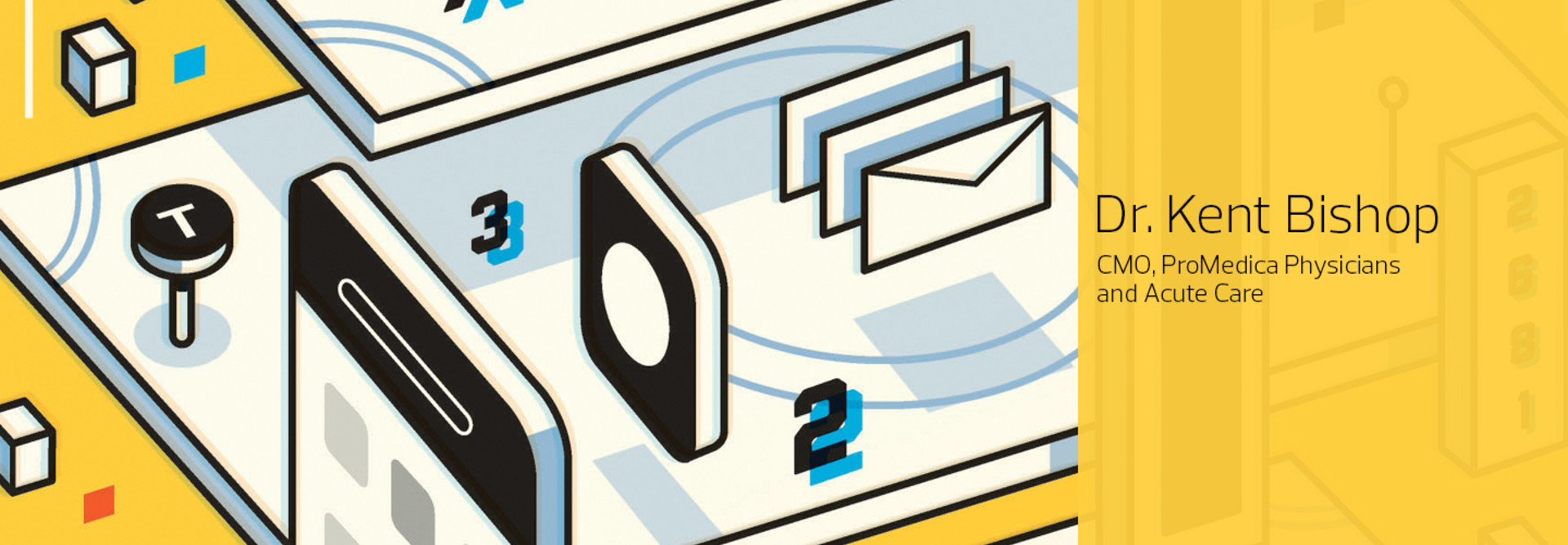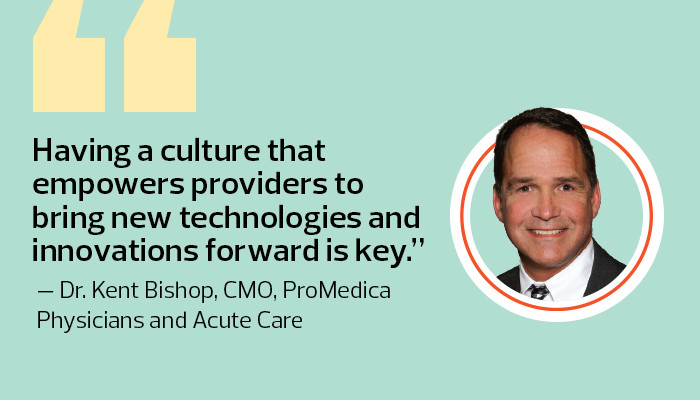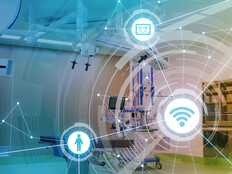HEALTHTECH: What is the CMO’s role in addressing technological changes in the industry?
BISHOP: CMOs have to identify and anticipate where technologies potentially impact patient safety and clinical care. Having a culture that empowers providers to bring new technologies and innovations forward is key. If we can do a good job listening, then ideas bubble up.
When you decide on a technology, champion it. However, when you don’t choose to go with a requested new technology, you must have the follow-up conversations with those providers so they don’t feel disenfranchised. Ultimately, good and open dialogue is key to supporting technological changes in medicine.
HEALTHTECH: How do you collaborate with different stakeholders to shape purchases and policies?
BISHOP: You have to have strong financial teams that can vet the financial impacts of technologies. Including operations stakeholders is also key to understanding if there’s a good business and clinical case for the technology. We’re fortunate to have an innovations department that is constantly looking at new technologies and can inform all of our business verticals about how a potential technology might affect them.
A few years ago, we centralized all of our corporate offices to downtown Toledo. This allows us to pull other resources, like legal and compliance, into the discussion. Now we can just walk around two or three floors of this building to get key players together and make a fairly quick decision.
READ MORE: Find out why teamwork makes healthcare IT work.
HEALTHTECH: How do you meet the demands of a tech-savvy patient population?
BISHOP: It’s about forming partnerships. When Alexa can diagnose things over the phone, we want to be their partner. We want to partner with Walmart when they put their clinics in, because Walmart’s going to identify patients who have needs.
We’ve also supported these savvy patients by leveraging existing technology. Having access to their own clinical data through the electronic health record is now table stakes. Launching video visits, communicating via secure email and accessing information as a patient in the hospital are several ways that we’re meeting these foundational needs.












